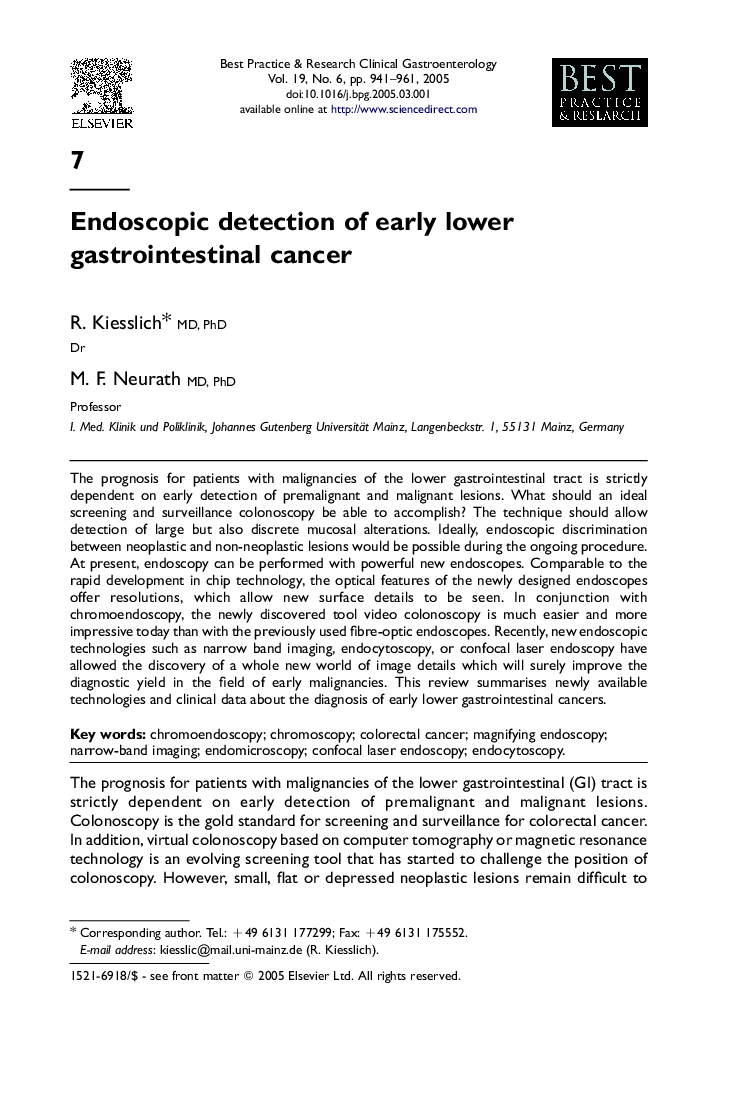| Article ID | Journal | Published Year | Pages | File Type |
|---|---|---|---|---|
| 9236118 | Best Practice & Research Clinical Gastroenterology | 2005 | 21 Pages |
Abstract
The prognosis for patients with malignancies of the lower gastrointestinal tract is strictly dependent on early detection of premalignant and malignant lesions. What should an ideal screening and surveillance colonoscopy be able to accomplish? The technique should allow detection of large but also discrete mucosal alterations. Ideally, endoscopic discrimination between neoplastic and non-neoplastic lesions would be possible during the ongoing procedure. At present, endoscopy can be performed with powerful new endoscopes. Comparable to the rapid development in chip technology, the optical features of the newly designed endoscopes offer resolutions, which allow new surface details to be seen. In conjunction with chromoendoscopy, the newly discovered tool video colonoscopy is much easier and more impressive today than with the previously used fibre-optic endoscopes. Recently, new endoscopic technologies such as narrow band imaging, endocytoscopy, or confocal laser endoscopy have allowed the discovery of a whole new world of image details which will surely improve the diagnostic yield in the field of early malignancies. This review summarises newly available technologies and clinical data about the diagnosis of early lower gastrointestinal cancers.
Keywords
Related Topics
Health Sciences
Medicine and Dentistry
Endocrinology, Diabetes and Metabolism
Authors
R. (Dr), M.F. (Professor),
